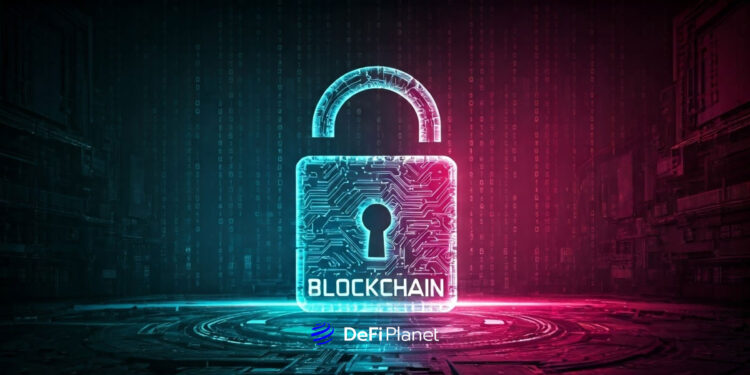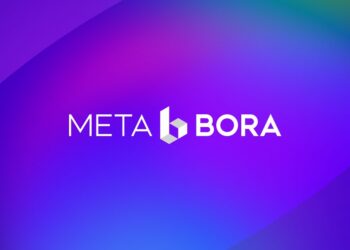Last updated on December 29th, 2024 at 03:12 pm
Blockchain networks, especially Ethereum, have faced scalability challenges due to the limited ability to handle high volumes of transactions quickly and affordably. One of the most promising solutions to this issue is the use of Rollups, which help alleviate the processing burden on the main chain by handling transactions off-chain.
For Ethereum, these platforms help by bundling many transactions together and submitting them as a single package to the main chain. This reduces the number of individual transactions Ethereum has to process, lowering transaction costs and speeding things up. Since Rollups still rely on Ethereum’s security, they are considered safe for blockchain users.
This is a big deal for decentralized applications and DeFi platforms that require high transaction speeds without breaking the bank.
With rollups, Ethereum can handle many more transactions per second, which is a massive improvement over its original Layer 1 setup that suffered from congestion and high gas fees.
Current Achievements of Rollups in Ethereum’s Evolution
Rollups have been a game-changer in Ethereum’s development. They are critical to Ethereum’s ability to scale, making it possible for more users to participate in the network without facing the performance issues that once held it back.
Some of the most popular rollups today include Optimism, Arbitrum, and zkSync. These rollups have been adopted by a growing number of users and projects. For example, Optimism has nearly $800 million in total value locked (TVL), and Arbitrum, which is even more popular, has over $3.2 billion. zkSync is also becoming a strong player, known for its fast transaction speeds and low fees.
While there are still some challenges to overcome, rollups like Arbitrum, Optimism, and zkSync have already made a noticeable impact and continue to shape Ethereum’s future.
The Limitations and Challenges of Rollups
Rollups often rely on complex cryptographic proofs, which require significant computational resources, making them expensive to implement and maintain. Also, deploying and managing ZK-Rollups demands specialized blockchain expertise. This complexity can raise development costs and slow down adoption.
While Rollups offer a promising solution to Ethereum’s scalability problem, these challenges highlight the need for further improvements in interoperability, liquidity solutions, and user experience to unlock their full potential.
State Fragmentation
One of the key challenges with Rollups is state fragmentation. Each Rollup maintains its own independent state, which can lead to issues with decentralized state storage across multiple Rollups. Since Rollups operate as separate ecosystems, they cannot easily share or synchronize their states, making it difficult to interact with data across different Rollups. This fragmentation can hinder the development of applications that require cross-Rollup interactions, limiting the full potential of the Ethereum ecosystem.
Liquidity Fragmentation
Liquidity fragmentation is another significant issue for Rollups. Since Rollups operate independently, liquidity is often confined to the specific Rollup rather than being universally accessible across Rollups and Ethereum Layer 1. This makes it difficult for users to transfer assets seamlessly between different Rollups or between a Rollup and the main Ethereum network. Without a unified liquidity pool, DeFi protocols and applications that rely on liquidity may face challenges in scaling effectively, as liquidity becomes siloed within specific Rollups.
User Experience Fragmentation
User experience is another area where Rollups face challenges. Since there is no standardized way for Rollups to communicate with each other or with the Ethereum mainnet, users must navigate multiple platforms and interfaces. Each Rollup typically has its own user interface, wallet support, and ecosystem-specific tools, which can lead to confusion for users who wish to interact with multiple Rollups. This fragmented experience makes it harder for users to move between Rollups and Ethereum Layer 1 without encountering friction or confusion, limiting Rollups’ appeal to a broader audience.
Additionally, Optimistic Rollups require users to wait for a fraud challenge period, typically up to 7 days, when withdrawing funds back to the main Ethereum network. This period allows others to submit fraud proofs if they believe a transaction was invalid. While this helps ensure network security, it means users can’t access their funds immediately, which can be frustrating for those needing faster withdrawals.
Complexity of Managing Multiple Rollups
For developers, managing multiple Rollups can be complex and resource-intensive. Each Rollup has its own set of rules, security models, and infrastructure, which requires developers to understand and optimize for different ecosystems. Additionally, the need to deploy and maintain applications across multiple Rollups increases development time and costs. This complexity can create barriers for new developers entering the space and slow down innovation. Furthermore, managing Rollup security, network upgrades, and interactions with Ethereum Layer 1 adds additional layers of complexity.
What’s Needed Beyond Rollups: Future Prospects for Ethereum’s Evolution
While Rollups play a key role in scaling Ethereum and reducing congestion, they are just one part of the broader solution needed to unlock Ethereum’s full potential. As blockchain technology advances, future improvements will focus on interoperability, cross-chain liquidity, and further upgrades to the core protocol. Projects like Polkadot and Cosmos are developing solutions that enable blockchains to communicate and share liquidity across networks, paving the way for a more interconnected ecosystem. These innovations will allow Ethereum and other blockchains to work together seamlessly, overcoming the silos that currently exist between chains.
In addition to these cross-chain advancements, Ethereum itself needs further technological upgrades to continue its evolution. Ethereum’s transition to a more scalable and efficient network involves significant updates, such as sharding, which splits the blockchain into smaller pieces to process transactions in parallel. Another key upgrade, EIP-4844, will improve data availability and further reduce transaction costs, helping Ethereum handle more users and applications. These upgrades, combined with innovations in cross-chain liquidity, will provide Ethereum with the tools to meet growing demand.
Moreover, the Ethereum community plays a crucial role in driving these innovations forward. Community-driven solutions, such as Ethereum Improvement Proposals (EIPs), are essential for advancing scalability, enhancing the user experience, and ensuring the network evolves in a way that meets the needs of developers and users. A decentralized approach to governance ensures that Ethereum’s development remains aligned with the interests of its diverse ecosystem, paving the way for a more scalable, user-friendly, and connected blockchain.
Final Thoughts
While Rollups have undoubtedly been a crucial advancement in scaling Ethereum and addressing its congestion issues, they alone cannot unlock blockchain’s true potential. Rollups are designed to offload transaction processing from the main Ethereum chain, but they still rely on Ethereum’s Layer 1 for security and data availability, creating limitations around scalability, interoperability, and user experience.
To truly unlock blockchain’s potential, we need a combination of additional innovations. Interoperability between different blockchains is essential, allowing assets and data to flow seamlessly across ecosystems.
Beyond technological upgrades, the role of community governance cannot be overstated. Ethereum’s decentralized approach to decision-making ensures that its evolution is driven by the needs and feedback of its users. By fostering an ecosystem where developers, users, and stakeholders collaborate, Ethereum can continue to innovate and adapt to the ever-evolving landscape of blockchain technology.
Disclaimer: This article is intended solely for informational purposes and should not be considered trading or investment advice. Nothing herein should be construed as financial, legal, or tax advice. Trading or investing in cryptocurrencies carries a considerable risk of financial loss. Always conduct due diligence.
If you would like to read more market analyses like this, visit DeFi Planet and follow us on Twitter, LinkedIn, Facebook, Instagram, and CoinMarketCap Community.
Take control of your crypto portfolio with MARKETS PRO, DeFi Planet’s suite of analytics tools.”





















